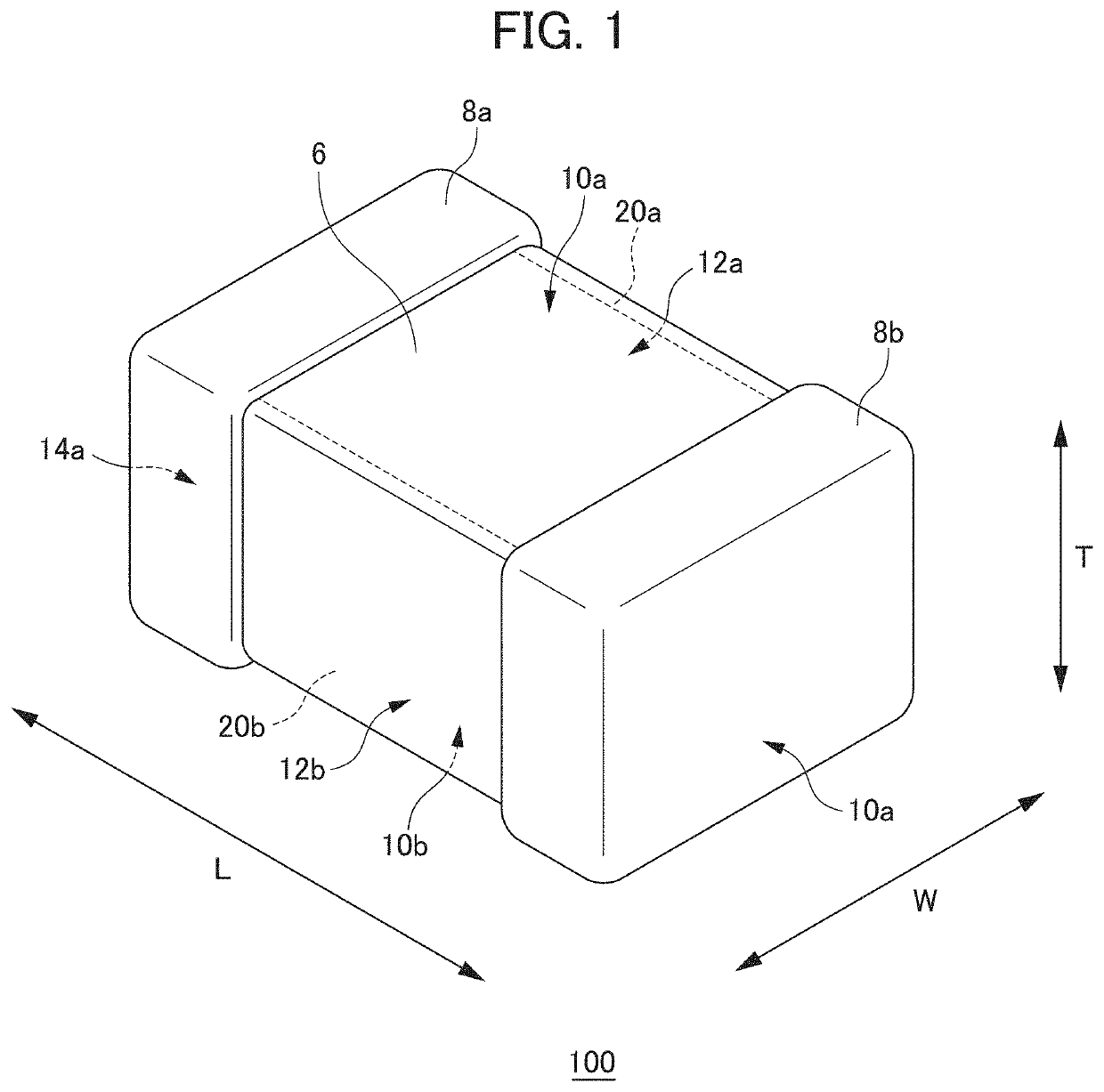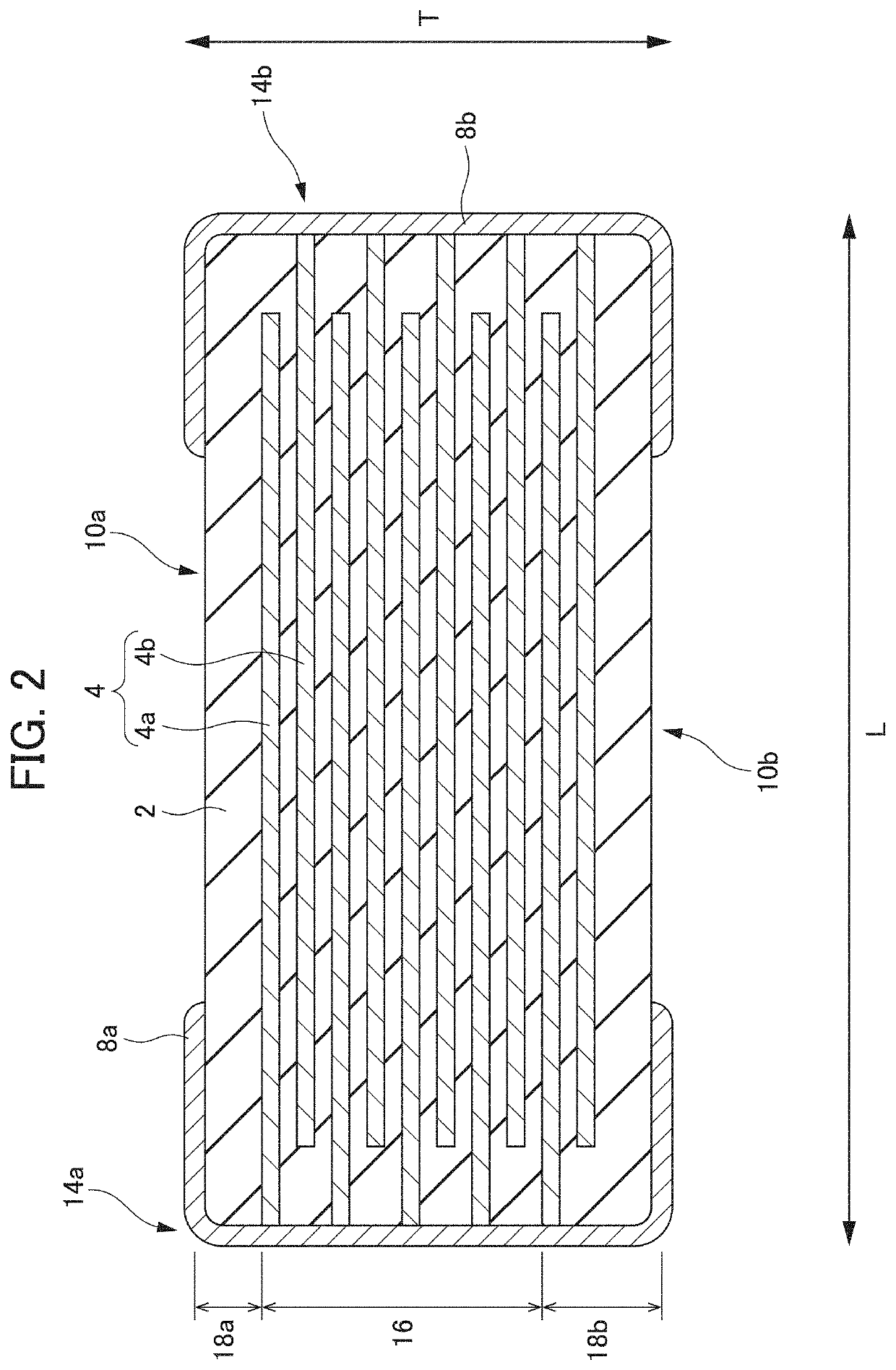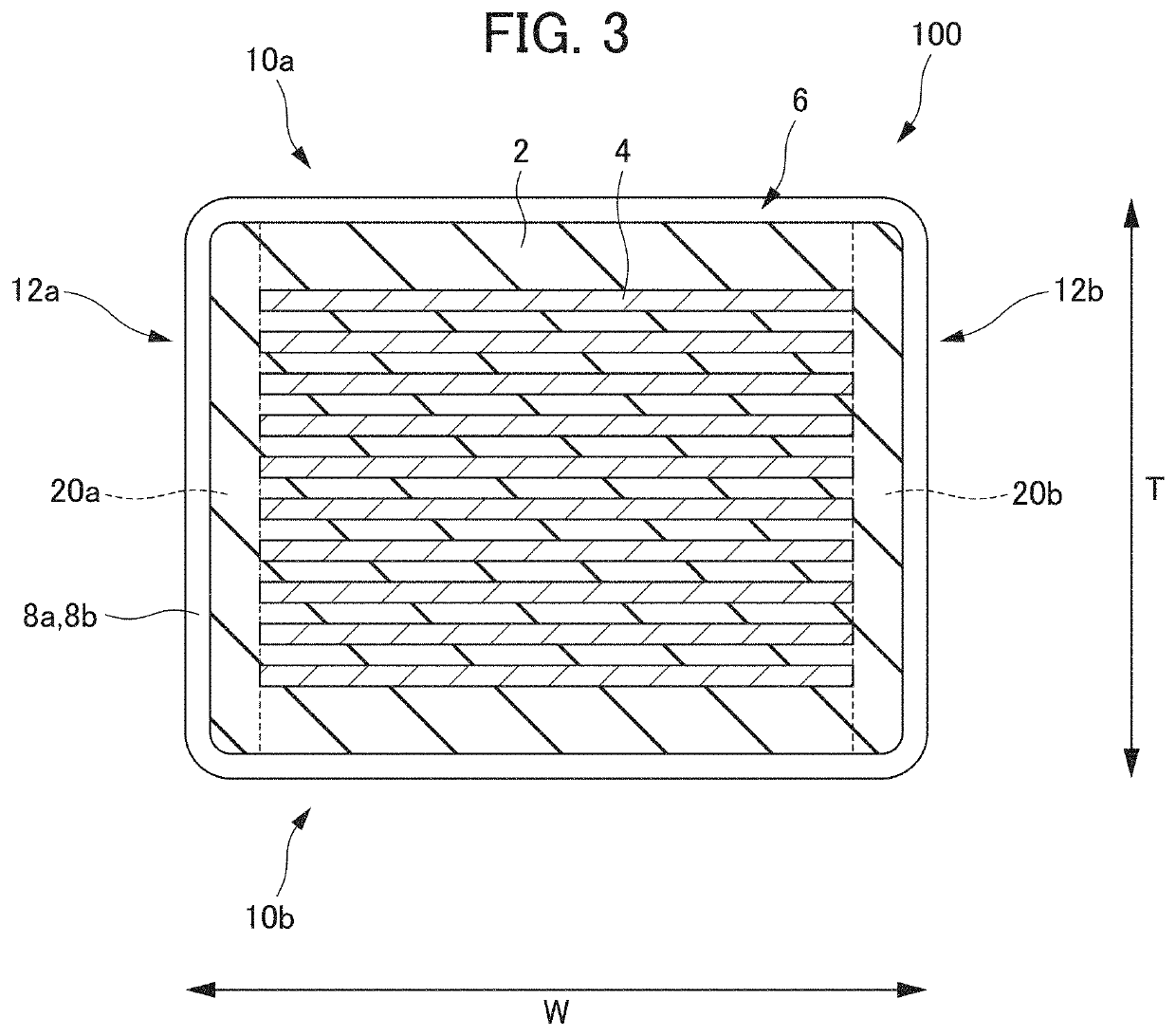Multilayer ceramic capacitor
a multi-layer ceramic and capacitor technology, applied in the direction of fixed capacitors, stacked capacitors, fixed capacitor details, etc., can solve the problems of reliability degradation and insulation resistance reduction between internal electrodes, and achieve the effect of improving the capacitance of multi-layer ceramic capacitors, reducing or preventing the formation of mg—ni protrusions
- Summary
- Abstract
- Description
- Claims
- Application Information
AI Technical Summary
Benefits of technology
Problems solved by technology
Method used
Image
Examples
examples 1 to 67
[0065]In Examples 1 to 67, the compositions of the dielectric layers were varied to manufacture multilayer ceramic capacitors, which were evaluated thereafter. The compositions of the dielectric layers and the characteristics of the capacitor are summarized in Table 1.
[0066]A BamTiO3 powder was prepared as a main component raw material. Here, m refers to the A / B molar ratio, i.e., Ba / Ti molar ratio, of the perovskite compound (ABO3). The BamTiO3 powder used had a particle size D50 of about 140 nm and a c-axis / a-axis ratio of the perovskite structure of about 1.0090. Next, the prepared BamTiO3 powder was weighed and wet-mixed by a ball mill to break up aggregates.
[0067]Besides the main component raw material, the additive component raw materials (Ni, Re, Mg, Mn, Si, Al, V) were weighed. As the additive component raw materials, nickel oxide (NiO), rare earth oxides (Dy2O3, etc.), magnesium carbonate (MgCO3), manganese carbonate (MnCO3), silicon oxide (SiO2), aluminum oxide (Al2O3), an...
examples 68 to 81
[0074]The amounts of the raw materials were adjusted to provide compositions of the dielectric layers and the side margin portions in the manufactured multilayer ceramic capacitors, as shown in Table 3. Except for the above, multilayer ceramic capacitors were manufactured in the same or substantially the same manner as in Example 6.
example 82
[0075]In the manufactured multilayer ceramic capacitor, the amounts of the raw materials were adjusted to provide compositions of the dielectric layers and the side margin portions, as shown in Table 3. Except for the above, a multilayer ceramic capacitor was manufactured in the same or substantially the same manner as in Example 1.
(2) Evaluation
[0076]The manufactured multilayer ceramic capacitors were evaluated for various characteristics as follows.
[0077]On the cross section of the multilayer ceramic capacitors, the side margin portion was analyzed by laser ablation ICP-MS. Furthermore, portions other than the inner region (22) were removed by ablating, and after being pulverized, the internal electrode Ni was removed by a magnet. The remaining ceramics were analyzed by ICP-MS to analyze the compositions of the dielectric layers.
Ni and Re Distributions in Grains
[0078]The cross sections of the multilayer ceramic capacitors were subjected to mapping analysis usin...
PUM
| Property | Measurement | Unit |
|---|---|---|
| thickness | aaaaa | aaaaa |
| thickness | aaaaa | aaaaa |
| thickness | aaaaa | aaaaa |
Abstract
Description
Claims
Application Information
 Login to View More
Login to View More - R&D
- Intellectual Property
- Life Sciences
- Materials
- Tech Scout
- Unparalleled Data Quality
- Higher Quality Content
- 60% Fewer Hallucinations
Browse by: Latest US Patents, China's latest patents, Technical Efficacy Thesaurus, Application Domain, Technology Topic, Popular Technical Reports.
© 2025 PatSnap. All rights reserved.Legal|Privacy policy|Modern Slavery Act Transparency Statement|Sitemap|About US| Contact US: help@patsnap.com



